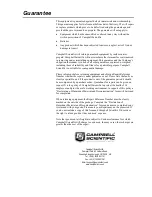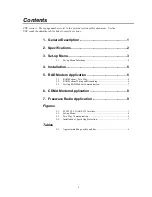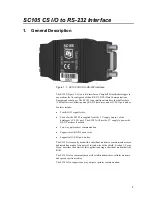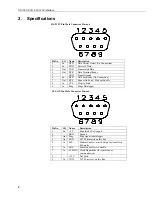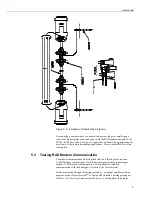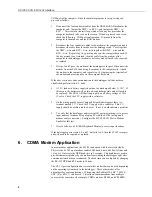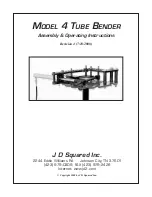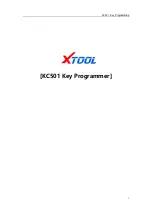
User Guide
5
For SDC Address 7, 8, 10, or 11, DTR will always be
driven to +5 V.
RTS will ‘key’ the data; it will be driven (+5 V) 20 ms
prior to data being sent out the RS-232, and remain driven
for 5 seconds after the last data is sent out the RS-232.
‘Custom mode’: This mode is identical to the ‘Modem mode’, except the
delays between RTS HI and data, data and RTS LO, and
the ‘dead time’ are all configurable.
4.
Installation
Connect the SC105 to the RS-232 device and to the datalogger with the SC12
9-pin cable (included). If the device has a 25-pin connector, a 9-pin female to
25-pin male adapter is required (pn #15751).
Proper transient protection should be installed to protect the computer and
datalogger in areas where damage due to lightning is possible. If this is a RAD
modem application, see Section 5.2,
RAD Modem Wiring and Grounding
.
5.
RAD Modem Application
The SC105 can be used with a short-range modem to communicate across a
4-wire, unconditioned dedicated line. Campbell Scientific offers a mounting
bracket (pn #6282) that will mount the RAD, SC105, and adapter (pn #15751) to
the back plate in a Campbell Scientific enclosure. This section describes using a
short-range asynchronous modem built by RAD*.
* SRM - 5A RAD Modem
RAD Data Communications, Inc.
900 Corporate Drive
Mahwah, NJ 07430
Tel: (201) 529-1100
Fax: (201) 529-5777
Email: market@radusa.com
www.rad.com
For transmission, the RAD modem uses a cable made of two pairs of twisted wires
with a shield. Data rates up to 9600 bps are possible. The low voltage
transmission levels minimize cross talk between adjacent lines within the same
cable. Data are transmitted and received at a balanced impedance, providing
excellent immunity to circuit noise. Table 5-1 gives the data rate possible for
several gauge cables across several distances.



